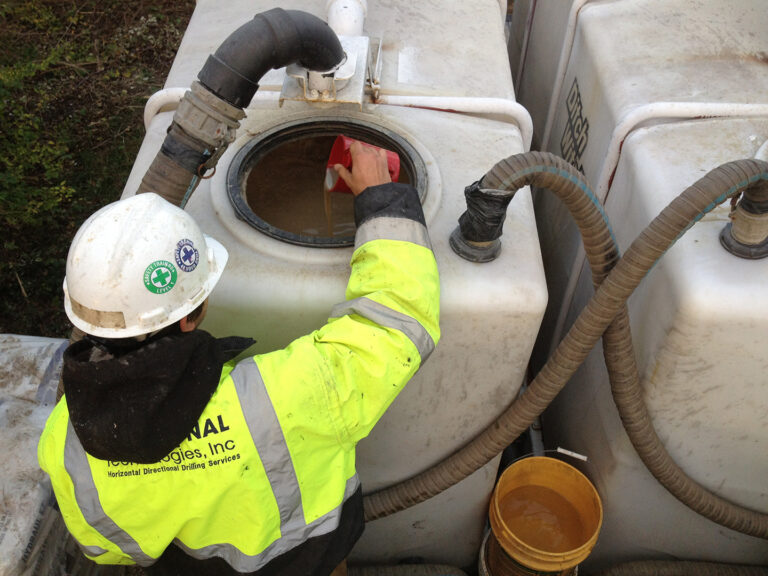The horizontal drilling mud program can make or break a successful installation. Whether drilling to install utility conduits or high-functioning horizontal wells for contaminant remediation, the drilling is a mud-rotary process. In most vertical well installations, pressure on the borehole is exerted from the side-walls, or laterally. Horizontal boreholes, on the other hand, have constant overburden pressure due to the weight of the soil, rock, and possibly groundwater on top of them. The mud program and its interactions with the surrounding geology is therefore critical for the pace of the drilling, environmental effects, and stability of the borehole during installation.
Biopolymers or Bentonite?
The choice between biopolymers and bentonite for drilling horizontal remediation wells hinges on the geologic conditions and environmental needs of the site. The reality is that there are benefits and drawbacks to both solutions. When comparing the words “biopolymer” and “bentonite” side by side, it can lead to a conclusion due to the “bio” in biopolymers, that they are derived naturally, while bentonite is not. It is true that biopolymers are derived from plants, bacteria, and other organic materials, but bentonite is also a naturally occurring clay. Both are viable options for the installation of horizontal remediation wells and can affect the installation in different ways.
A stable borehole is critical for the installation of horizontal remediation wells. Bentonite contains intrinsic properties that make it a more reliable selection for borehole stability. It forms a filter cake around the borehole wall that is stronger than the biopolymer alternative. As hundreds of feet or more of well material are installed at once, bentonite can provide peace of mind that the borehole remains open for a successful installation. Biopolymers, on the other hand, offer enhanced viscosity compared to bentonite, providing lubrication and circulation of drill cuttings during the drilling process. However, the high viscosity content in biopolymer solutions is more likely to react with clay-rich lithologies to produce more waste than bentonite options.
Factors Affecting Mud Selection
There are many factors outside of the consultant’s control that contribute to the selection of a mud program. For example, site regulators may place restrictions on the fluid base, forcing the use of biodegradable solutions or bentonite. Or, perhaps the budget is the critical factor driving the means and methods of the horizontal well installations. From a cost perspective, bentonite is significantly cheaper than biopolymer options, giving an edge in stability while not breaking the bank. Biopolymers, however, are generally considered the environmentally friendly option since they are biodegradable. Regardless of the mud program used to install the wells, the development process remains the same, where a majority of the drilling mud is flushed from the borehole prior to the well’s operation.

Mixing horizontal drilling mud
The entire objective of the mud program is to ensure the successful installation of the well.
This requires an analysis of the geology and expected pressures from the surrounding formation. Directional Technologies, Inc. (DTI) has over thirty years of experience developing mud programs in varying geologic conditions across the country to ensure the best remedial results post-installation.
How can the advantages offered by decades of technological advancement in the field of horizontal wells benefit your project? Call our horizontal remediation well experts at 1-877-788-4479 to discuss your current project needs or contact us with questions, review case studies, and to learn more.
Written by: Elliott Andelman, Professional Geologist